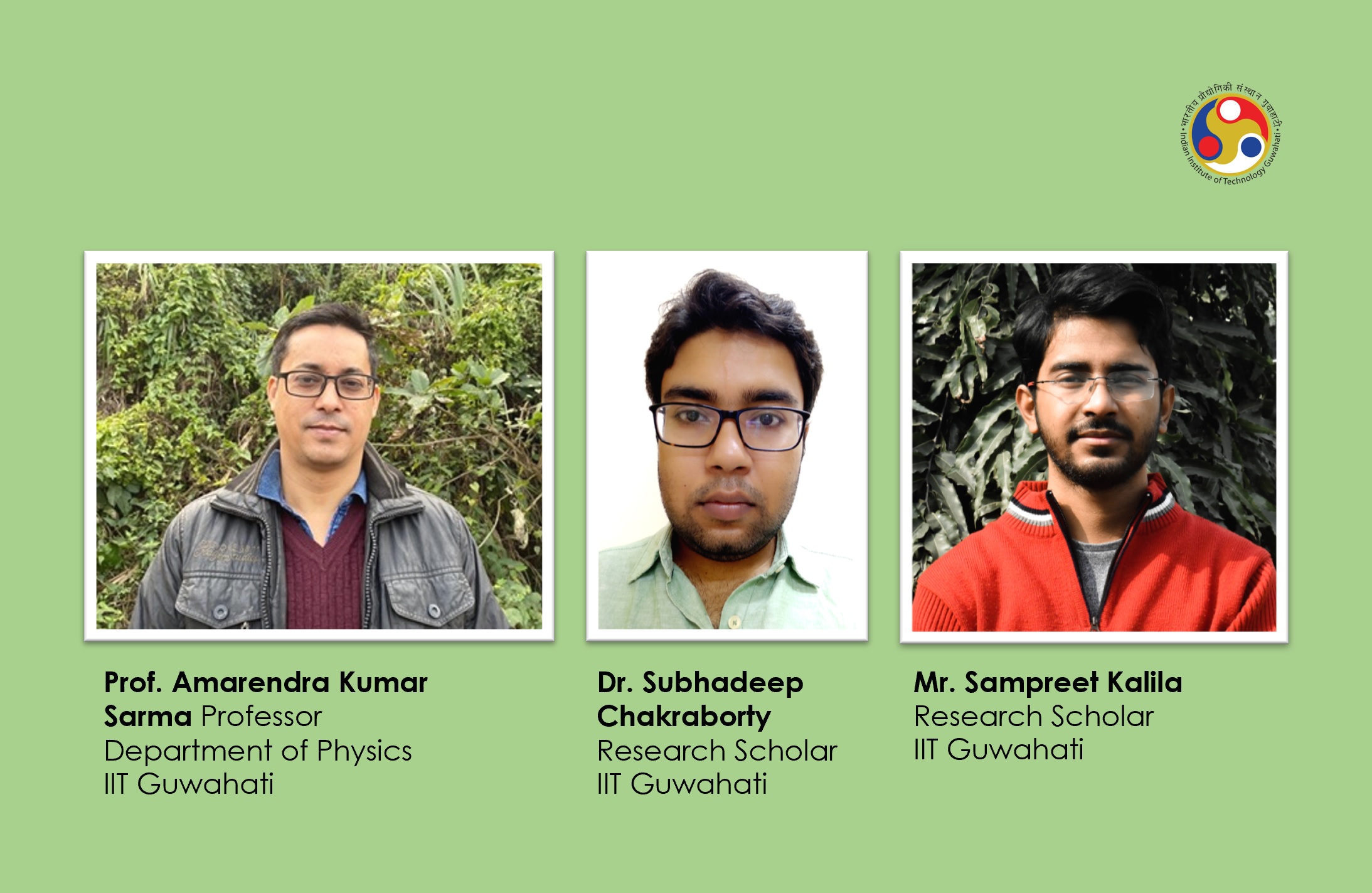IIT Guwahati Scientists gain international recognition for their work on Quantum Entanglement
Guwahati: A research team at IIT Guwahati, led by Prof. Amarendra Kumar Sarma, Professor, Department of Physics, have studied the workings of quantum entanglement, a phenomenon that continues to baffle the finest scientific minds of the world. The team’s theoretical research on cavity optomechanical systems has potential applications in quantum information science and can contribute towards understanding the boundary between classical and quantum physics. The team, comprising Prof. Amarendra Kumar Sarma and his research scholars, Dr. Subhadeep Chakraborty and Mr. Sampreet Kalila, have recently summarized their understanding in an invited review article in a prestigious research journal AVS Quantum Science published by American Institute of Physics (https://doi.org/10.1116/5.0022349) . The article is published as a featured article of the journal this month.
Prof. Sarma was invited to write a review article for the journal in recognition to his seminal works in quantum optics. Prof. Sarma and his group, in recent years, published their research articles in the area of quantum optics in various prestigious journals such as Physical Review A, Journal of Optical Society of America B, Annals of Physics, Scientific Reports and so on. Some of the most recent works by Prof. Sarma’s research group could be found in the following links:
https://doi.org/10.1103/PhysRevA.100.063846 https://doi.org/10.1364/JOSAB.34.001503
https://doi.org/10.1016/j.aop.2018.03.007
https://doi.org/10.1038/s41598-018-32743-1 https://doi.org/10.1103/PhysRevA.102.043719
Quantum physics, the field of Science that has ridden on the shoulders of such giants as Niels Bohr, Werner Heisenberg, and Erwin Schrödinger, continues to be researched by labs all over the world, to help unravel the workings of the universe. This study of subatomic particles and forces forms the basis of the computer chip, the electric current, laser power, and even light from the sun.
One of the most fascinating, and perhaps bizarre traits of quantum mechanics is quantum entanglement, the interaction among quantum systems such as subatomic particles, in ways not possible in our larger, perceivable classical world. When two subatomic particles, like a pair of electrons, are entangled, it is impossible to measure properties of one without affecting the other. No matter how far they move apart, if one is tweaked, measured, or observed, the other seems to instantly respond, even if the whole world now lies between them.
“Nobody knows how or why Quantum entanglement happens”, says Dr. Amarendra Kumar Sarma, Professor, Department of Physics, IIT Guwahati, about quantum entanglement, the phenomenon that baffled even the great intellect of Einstein. “That, however, does not make it unreal – numerous experiments have established that entanglement is indeed a real phenomenon in subatomic systems. In fact, quantum entanglement is the building block of the second generation of quantum technology such as quantum computation, quantum cryptography, quantum teleportation, and quantum dense coding”, adds Prof. Sarma.
Various research groups around the world are working towards understanding quantum entanglement across various subfields. Dr. Sarma’s team works on understanding it in the realm of cavity optomechanics, the interaction between light and mechanical objects at low-energy scales.
“In simplified terms, a cavity optomechanical system refers to a set of mirrors where one of the mirrors is fixed while the other one is slightly movable”, explains Dr. Sarma. Surprisingly, this simple model can explain the physics of a plethora of complicated optomechanical systems. Such systems provide a universal tool to achieve quantum control of mechanical motion. But beyond application, the research helps to understand the boundary between classical and quantum physics.
“We have come up with various practical schemes to enhance quantum correlations in optomechanical systems. Apart from entanglement we are looking into the aspects of qubit transfer, photon and phonon blockade also in such systems owing to their tremendous applications in quantum communication and information sciences,” says the lead researcher Dr. Sarma. More recently, the group has addressed the issue of “entanglement sudden death” under the influence of a local noisy environment, a stumbling block encountered by scientists a decade ago. The researchers have proposed a scheme to tackle such shortcomings using an optomechanical platform.
The scientists have published their work in prestigious journals of Physics, and their recent featured article in AVS Quantum Science has provided them the impetus for more rigorous research in unravelling the mysteries of quantum entanglement and other quantum optical phenomena.

